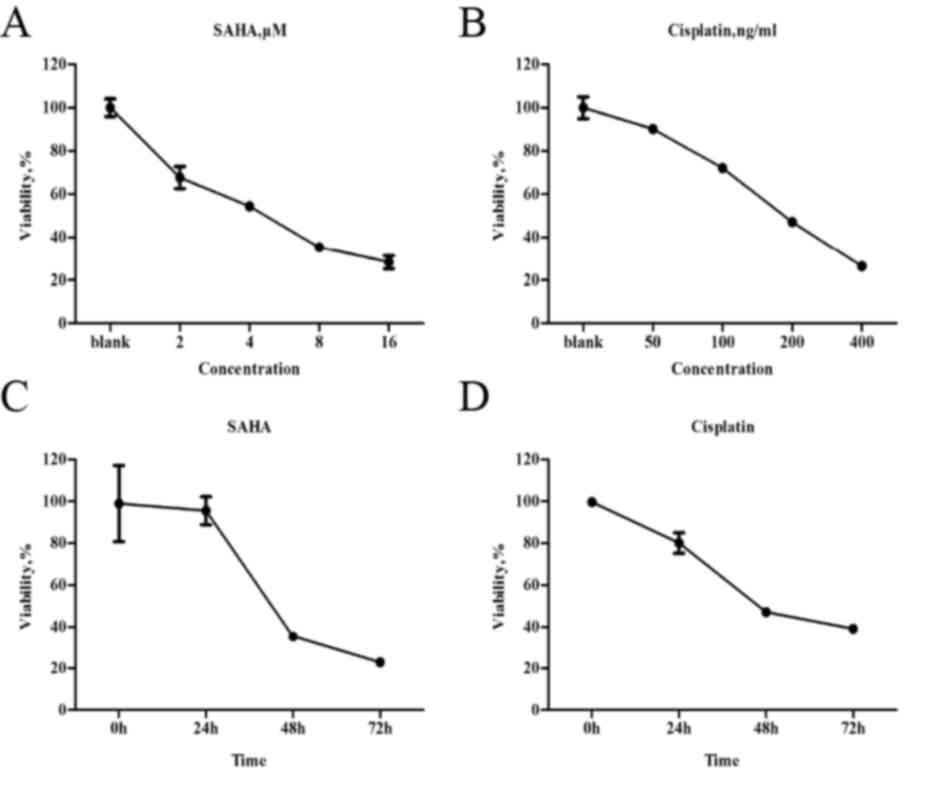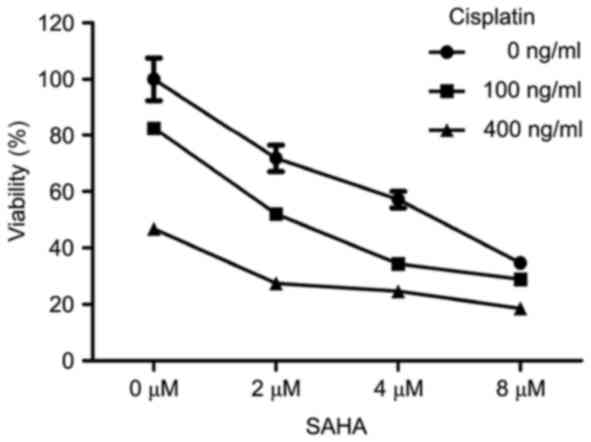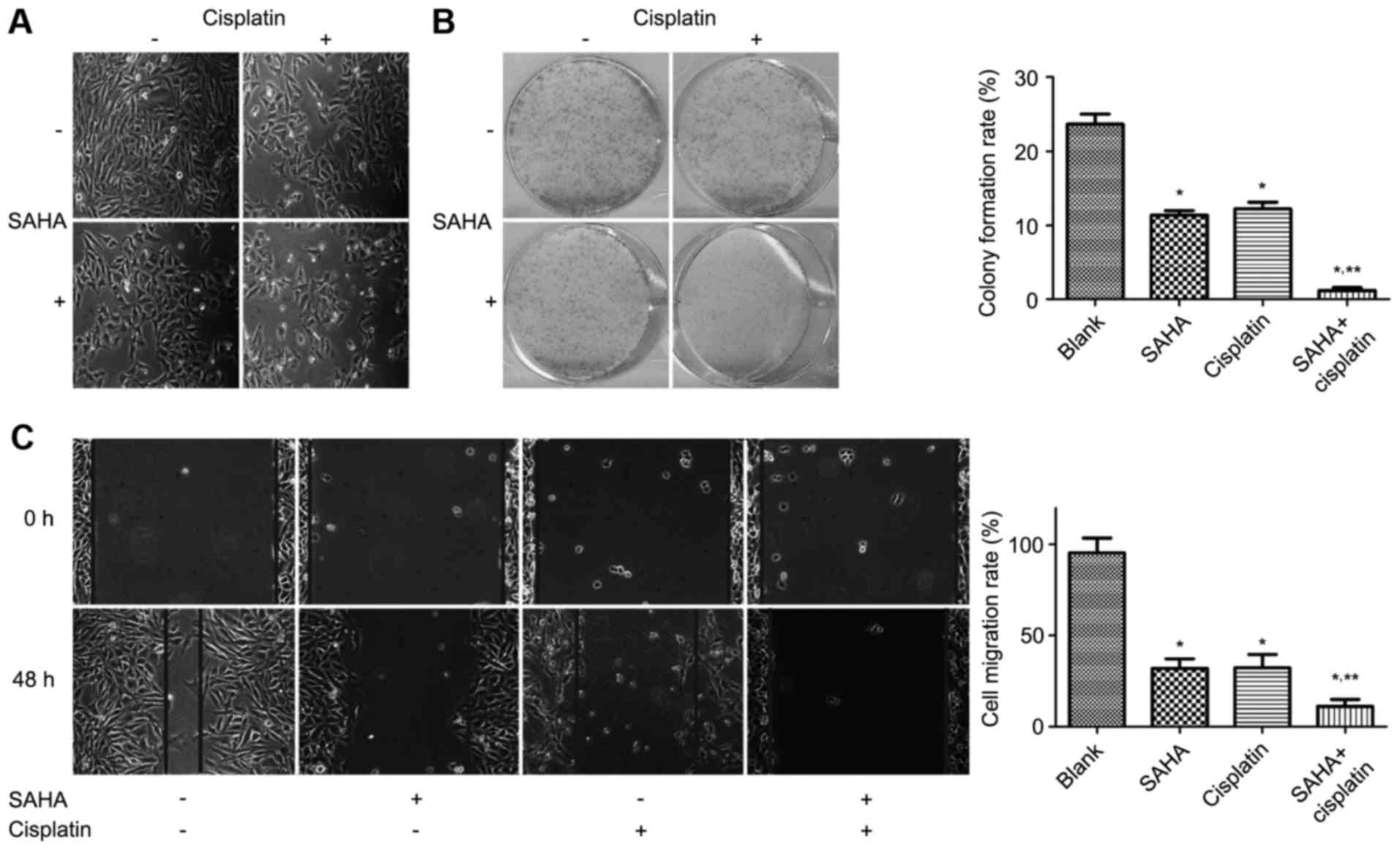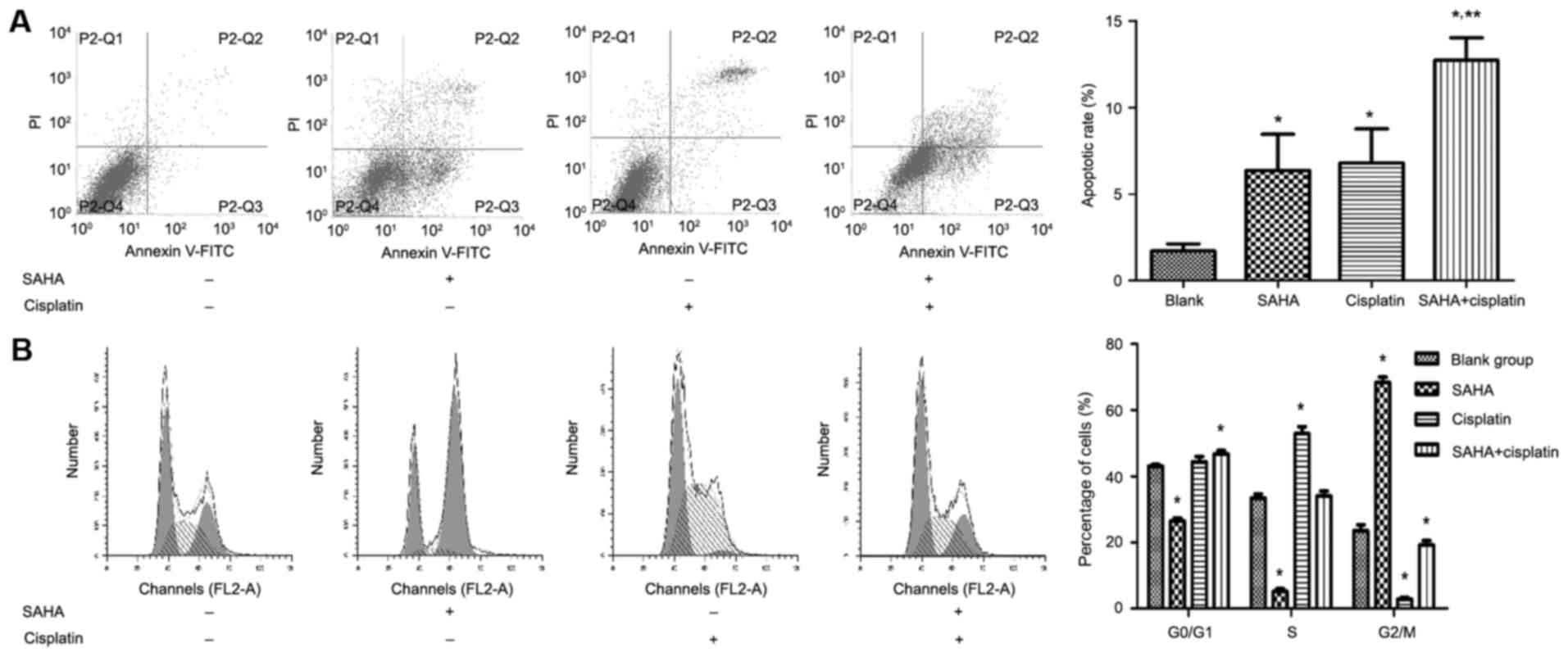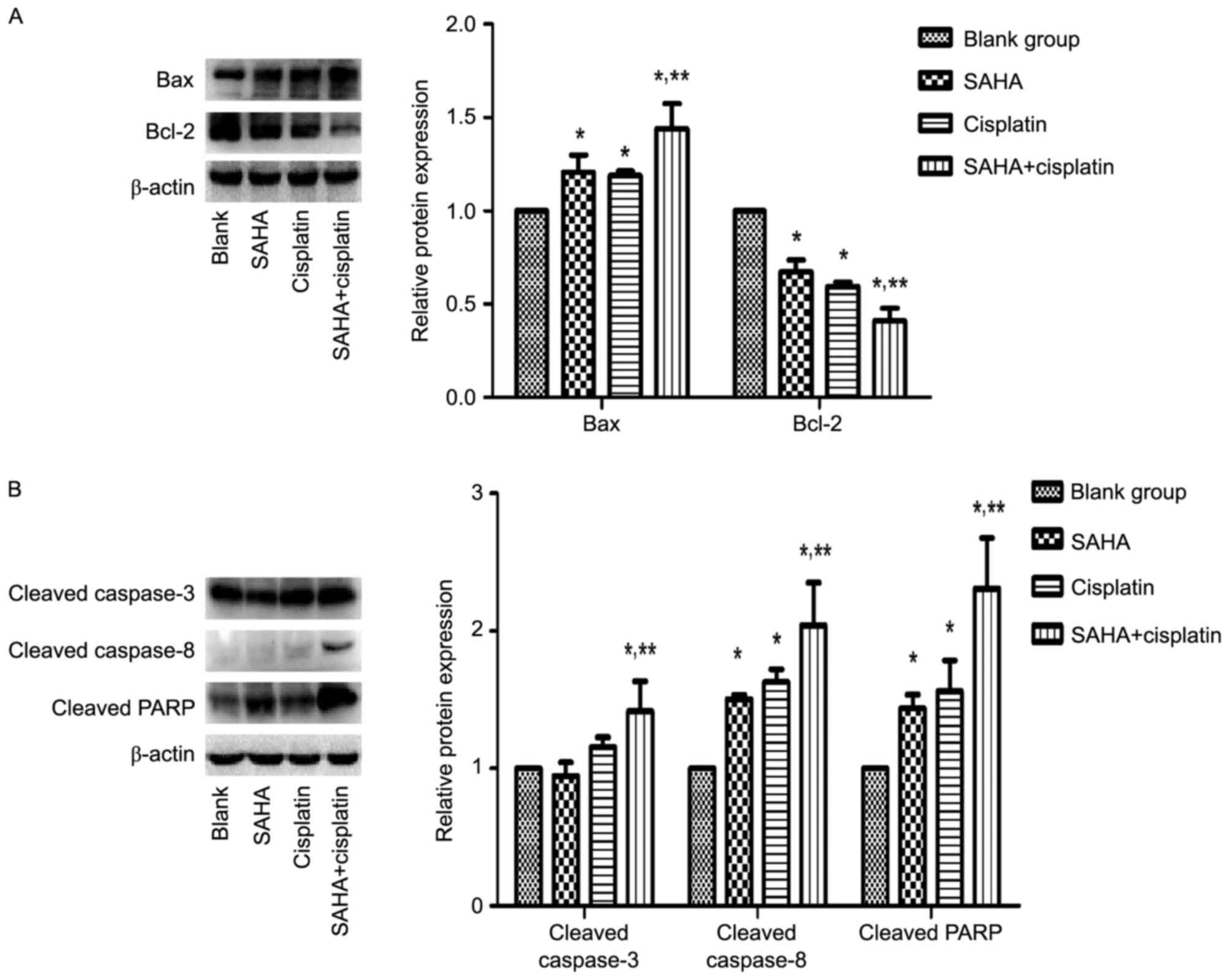|
1
|
Siclari VA and Qin L: Targeting the
osteosarcoma cancer stem cell. J Orthop Surg Res. 5:782010.
View Article : Google Scholar : PubMed/NCBI
|
|
2
|
Hossain MS, Begum M, Mian MM, Ferdous S,
Kabir S, Sarker HK, Karim S, Choudhury S, Khan A, Khan ZJ and
Karim-Kos HE: Epidemiology of childhood and adolescent cancer in
Bangladesh, 2001–2014. BMC Cancer. 16:1042016. View Article : Google Scholar : PubMed/NCBI
|
|
3
|
Bacci G, Longhi A, Versari M, Mercuri M,
Briccoli A and Picci P: Prognostic factors for osteosarcoma of the
extremity treated with neoadjuvant chemotherapy: 15-year experience
in 789 patients treated at a single institution. Cancer.
106:1154–1161. 2006. View Article : Google Scholar : PubMed/NCBI
|
|
4
|
Ferrari S, Smeland S, Mercuri M, Bertoni
F, Longhi A, Ruggieri P, Alvegard TA, Picci P, Capanna R, Bernini
G, et al: Neoadjuvant chemotherapy with high-dose Ifosfamide,
high-dose methotrexate, cisplatin, and doxorubicin for patients
with localized osteosarcoma of the extremity: A joint study by the
Italian and Scandinavian Sarcoma Groups. J Clin Oncol.
23:8845–8852. 2005. View Article : Google Scholar : PubMed/NCBI
|
|
5
|
Dasari S and Tchounwou PB: Cisplatin in
cancer therapy: Molecular mechanisms of action. Eur J Pharmacol.
740:364–378. 2014. View Article : Google Scholar : PubMed/NCBI
|
|
6
|
Siddik ZH: Cisplatin: Mode of cytotoxic
action and molecular basis of resistance. Oncogene. 22:7265–7279.
2003. View Article : Google Scholar : PubMed/NCBI
|
|
7
|
Fennell DA, Summers Y, Cadranel J, Benepal
T, Christoph DC, Lal R, Das M, Maxwell F, Visseren-Grul C and Ferry
D: Cisplatin in the modern era: The backbone of first-line
chemotherapy for non-small cell lung cancer. Cancer Treat Rev.
44:42–50. 2016. View Article : Google Scholar : PubMed/NCBI
|
|
8
|
Douillard JY, Eckardt J and Scagliotti GV:
Challenging the platinum combinations in the chemotherapy of NSCLC.
Lung Cancer. 38 Suppl 4:S21–S28. 2002. View Article : Google Scholar : PubMed/NCBI
|
|
9
|
Graham JS, Kaye SB and Brown R: The
promises and pitfalls of epigenetic therapies in solid tumours. Eur
J Cancer. 45:1129–1136. 2009. View Article : Google Scholar : PubMed/NCBI
|
|
10
|
Atala A: Re: SAHA triggered MET activation
contributes to SAHA tolerance in solid cancer cells. J Urol.
194:848–849. 2015. View Article : Google Scholar
|
|
11
|
Lakshmaiah KC, Jacob LA, Aparna S,
Lokanatha D and Saldanha SC: Epigenetic therapy of cancer with
histone deacetylase inhibitors. J Cancer Res Ther. 10:469–478.
2014.PubMed/NCBI
|
|
12
|
Mai A, Massa S, Rotili D, Cerbara I,
Valente S, Pezzi R, Simeoni S and Ragno R: Histone deacetylation in
epigenetics: An attractive target for anticancer therapy. Med Res
Rev. 25:261–309. 2005. View Article : Google Scholar : PubMed/NCBI
|
|
13
|
Blattmann C, Oertel S, Ehemann V, Thiemann
M, Huber PE, Bischof M, Witt O, Deubzer HE, Kulozik AE, Debus J and
Weber KJ: Enhancement of radiation response in osteosarcoma and
rhabdomyosarcoma cell lines by histone deacetylase inhibition. Int
J Radiat Oncol Biol Phys. 78:237–245. 2010. View Article : Google Scholar : PubMed/NCBI
|
|
14
|
Castro-Galache MD, Ferragut JA, Barbera
VM, Martín-Orozco E, Gonzalez-Ros JM, Garcia-Morales P and Saceda
M: Susceptibility of multidrug resistance tumor cells to apoptosis
induction by histone deacetylase inhibitors. Int J Cancer.
104:579–586. 2003. View Article : Google Scholar : PubMed/NCBI
|
|
15
|
Luong QT, O'Kelly J, Braunstein GD,
Hershman JM and Koeffler HP: Antitumor activity of suberoylanilide
hydroxamic acid against thyroid cancer cell lines in vitro and in
vivo. Clin Cancer Res. 12:5570–5577. 2006. View Article : Google Scholar : PubMed/NCBI
|
|
16
|
Hiriyan J, Shivarudraiah P, Gavara G,
Annamalai P, Natesan S, Sambasivam G and Sukumaran SK: Discovery of
PAT-1102, a novel, potent and orally active histone deacetylase
inhibitor with antitumor activity in cancer mouse models.
Anticancer Res. 35:229–237. 2015.PubMed/NCBI
|
|
17
|
Modesitt SC, Sill M, Hoffman JS and Bender
DP: Gynecologic Oncology Group: A phase II study of vorinostat in
the treatment of persistent or recurrent epithelial ovarian or
primary peritoneal carcinoma: A gynecologic oncology group study.
Gynecol Oncol. 109:182–186. 2008. View Article : Google Scholar : PubMed/NCBI
|
|
18
|
Duvic M and Vu J: Vorinostat: A new oral
histone deacetylase inhibitor approved for cutaneous T-cell
lymphoma. Expert Opin Investig Drugs. 16:1111–1120. 2007.
View Article : Google Scholar : PubMed/NCBI
|
|
19
|
Takai N and Narahara H: Preclinical
studies of chemotherapy using histone deacetylase inhibitors in
endometrial cancer. Obstet Gynecol Int. 2010:9238242010. View Article : Google Scholar : PubMed/NCBI
|
|
20
|
Kelly WK, Richon VM, O'Connor O, Curley T,
MacGregor-Curtelli B, Tong W, Klang M, Schwartz L, Richardson S,
Rosa E, et al: Phase I clinical trial of histone deacetylase
inhibitor: Suberoylanilide hydroxamic acid administered
intravenously. Clin Cancer Res. 9:3578–3588. 2003.PubMed/NCBI
|
|
21
|
Diyabalanage HV, Granda ML and Hooker JM:
Combination therapy: Histone deacetylase inhibitors and
platinum-based chemotherapeutics for cancer. Cancer Lett. 329:1–8.
2013. View Article : Google Scholar : PubMed/NCBI
|
|
22
|
van Roosmalen W, Le Dévédec SE, Golani O,
Smid M, Pulyakhina I, Timmermans AM, Look MP, Zi D, Pont C, de
Graauw M, et al: Tumor cell migration screen identifies SRPK1 as
breast cancer metastasis determinant. J Clin Invest. 125:1648–1664.
2015. View
Article : Google Scholar : PubMed/NCBI
|
|
23
|
Bailon-Moscoso N, Cevallos-Solorzano G,
Romero-Benavides JC and Orellana MI: Natural compounds as
modulators of cell cycle arrest: Application for anticancer
chemotherapies. Curr Genomics. 18:106–131. 2017. View Article : Google Scholar : PubMed/NCBI
|
|
24
|
Alfranca A, Martinez-Cruzado L, Tornin J,
Abarrategi A, Amaral T, de Alava E, Menendez P, Garcia-Castro J and
Rodriguez R: Bone microenvironment signals in osteosarcoma
development. Cell Mol Life Sci. 72:3097–3113. 2015. View Article : Google Scholar : PubMed/NCBI
|
|
25
|
Zhang Y, Zhang L, Zhang G, Li S, Duan J,
Cheng J, Ding G, Zhou C, Zhang J, Luo P, et al: Osteosarcoma
metastasis: Prospective role of ezrin. Tumour Biol. 35:5055–5059.
2014. View Article : Google Scholar : PubMed/NCBI
|
|
26
|
Allison DC, Carney SC, Ahlmann ER,
Hendifar A, Chawla S, Fedenko A, Angeles C and Menendez LR: A
meta-analysis of osteosarcoma outcomes in the modern medical era.
Sarcoma. 2012:7048722012. View Article : Google Scholar : PubMed/NCBI
|
|
27
|
Mokhtari Bayat R, Homayouni TS, Baluch N,
Morgatskaya E, Kumar S, Das B and Yeger H: Combination therapy in
combating cancer. Oncotarget. 8:38022–38043. 2017. View Article : Google Scholar : PubMed/NCBI
|
|
28
|
Sato T, Suzuki M, Sato Y, Echigo S and
Rikiishi H: Sequence-dependent interaction between cisplatin and
histone deacetylase inhibitors in human oral squamous cell
carcinoma cells. Int J Oncol. 28:1233–1241. 2006.PubMed/NCBI
|
|
29
|
Galanski M: Recent developments in the
field of anticancer platinum complexes. Recent Pat Anticancer Drug
Discov. 1:285–295. 2006. View Article : Google Scholar : PubMed/NCBI
|
|
30
|
Longhi A, Errani C, De Paolis M, Mercuri M
and Bacci G: Primary bone osteosarcoma in the pediatric age: State
of the art. Cancer Treat Rev. 32:423–436. 2006. View Article : Google Scholar : PubMed/NCBI
|
|
31
|
Reedijk J: New clues for platinum
antitumor chemistry: Kinetically controlled metal binding to DNA.
Proc Natl Acad Sci USA. 100:3611–3616. 2003. View Article : Google Scholar : PubMed/NCBI
|
|
32
|
Marks PA: Discovery and development of
SAHA as an anticancer agent. Oncogene. 26:1351–1356. 2007.
View Article : Google Scholar : PubMed/NCBI
|
|
33
|
Blumenschein GR Jr, Kies MS,
Papadimitrakopoulou VA, Lu C, Kumar AJ, Ricker JL, Chiao JH, Chen C
and Frankel SR: Phase II trial of the histone deacetylase inhibitor
vorinostat (Zolinza, suberoylanilide hydroxamic acid, SAHA) in
patients with recurrent and/or metastatic head and neck cancer.
Invest New Drugs. 26:81–87. 2008. View Article : Google Scholar : PubMed/NCBI
|
|
34
|
Vansteenkiste J, Van Cutsem E, Dumez H,
Chen C, Ricker JL, Randolph SS and Schöffski P: Early phase II
trial of oral vorinostat in relapsed or refractory breast,
colorectal, or non-small cell lung cancer. Invest New Drugs.
26:483–488. 2008. View Article : Google Scholar : PubMed/NCBI
|
|
35
|
Jin KL, Park JY, Noh EJ, Hoe KL, Lee JH,
Kim JH and Nam JH: The effect of combined treatment with cisplatin
and histone deacetylase inhibitors on HeLa cells. J Gynecol Oncol.
21:262–268. 2010. View Article : Google Scholar : PubMed/NCBI
|
|
36
|
Wawruszak A, Luszczki JJ, Grabarska A,
Gumbarewicz E, Dmoszynska-Graniczka M, Polberg K and Stepulak A:
Assessment of interactions between cisplatin and two histone
deacetylase inhibitors in MCF7, T47D and MDA-MB-231 human breast
cancer cell lines - an isobolographic analysis. PLoS One.
10:e01430132015. View Article : Google Scholar : PubMed/NCBI
|
|
37
|
Rathore S, Datta G, Kaur I, Malhotra P and
Mohmmed A: Disruption of cellular homeostasis induces organelle
stress and triggers apoptosis like cell-death pathways in malaria
parasite. Cell Death Dis. 6:e18032015. View Article : Google Scholar : PubMed/NCBI
|
|
38
|
Pu F, Chen F, Lin S, Chen S, Zhang Z, Wang
B and Shao Z: The synergistic anticancer effect of cisplatin
combined with Oldenlandia diffusa in osteosarcoma MG-63 cell line
in vitro. Onco Targets Ther. 9:255–263. 2016.PubMed/NCBI
|
|
39
|
Porter AG and Jänicke RU: Emerging roles
of caspase-3 in apoptosis. Cell Death Differ. 6:99–104. 1999.
View Article : Google Scholar : PubMed/NCBI
|
|
40
|
Kaufmann SH, Lee SH, Meng XW, Loegering
DA, Kottke TJ, Henzing AJ, Ruchaud S, Samejima K and Earnshaw WC:
Apoptosis-associated caspase activation assays. Methods.
44:262–272. 2008. View Article : Google Scholar : PubMed/NCBI
|
|
41
|
Häcker G and Paschen SA: Therapeutic
targets in the mitochondrial apoptotic pathway. Expert Opin Ther
Targets. 11:515–526. 2007. View Article : Google Scholar : PubMed/NCBI
|















